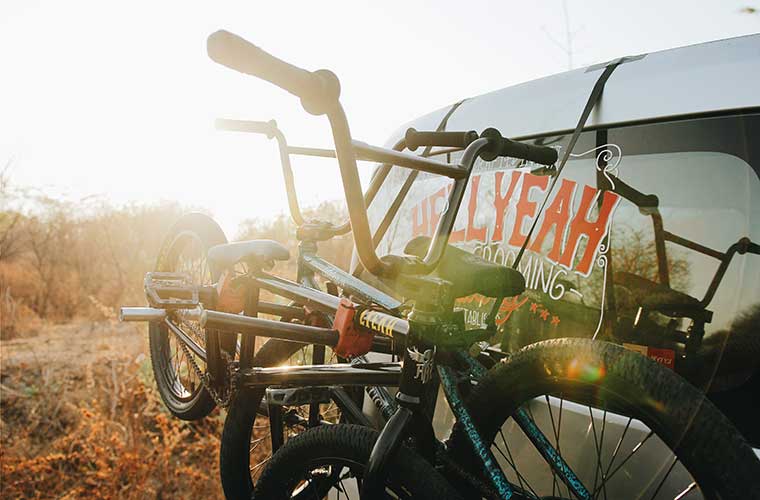How to carry your bike in the car for your MTB tours in the Pyrenees

The Pyrenees is a dream destination for mountain bikers. With its breathtaking landscapes, challenging routes and unspoilt nature, it is the perfect place for an adventure on two wheels. However, one of the most common questions among cyclists is: how to carry the bike in the car? In this article, we offer you a complete guide to transporting your bike safely and efficiently, ensuring that it arrives in perfect condition to make the most of your MTB tours in the Pyrenees.
Types of bicycle racks
There are several types of bike racks available on the market, each with its own advantages and disadvantages. Here are the most common options:
Roof bike carriers
Roof racks are a popular choice among cyclists. They mount on the roof bars of the car and keep the bike safe and out of the way. Some of their advantages include:
- Stability: They keep the bike steady and stable.
- Luggage compartment accessibility: They do not obstruct access to the boot of the car.
- Capacity: Several bicycles can be carried at the same time.
However, they also have some drawbacks:
- Height: It can be difficult to load and unload the bicycle, especially in tall cars.
- Wind resistance: They increase wind resistance and can affect fuel consumption.
Hitch-mounted bicycle racks
These bike racks are fitted to the car's towbar. They are easy to use and do not require the bike to be lifted high up. Advantages include:
- Ease of use: Loading and unloading the bike is easier.
- Less wind resistance: They do not significantly affect fuel consumption.
- Capacity: Many models can carry several bicycles.
Disadvantages include:
- Luggage compartment access: They may obstruct access to the luggage compartment.
- Compatibility: You need a towbar on your car.
Tailgate bike carrier
These bike racks are attached to the tailgate of the car by means of straps and hooks. They are an economical and easy to install option. The advantages are:
- Price: They are generally cheaper.
- Ease of installation: No special tools are required.
Disadvantages include:
- Stability: They may be less stable than other options.
- Luggage compartment access: They obstruct access to the boot of the car.
- Risk of harm: There is an increased risk of damaging the paintwork of the car or bicycle.
Tips for taking your bike in the car
Saber how to take your bike in the car is essential to enjoy your MTB tours in the Pyrenees without mishaps. Choose the bike rack that best suits your needs and follow our advice to ensure safe and efficient transport. This way, you'll be able to concentrate on what really matters: enjoying the incredible experience of touring the Pyrenees on your mountain bike.
1. Secure your bike properly
Regardless of the type of bike rack you choose, it is crucial to make sure your bike is securely fastened. Use additional straps if necessary and check that everything is securely fastened before you set off on your journey.
2. Protect your bike and car
To avoid damage to both the bike and the car, consider using foam pads or pads in areas where the bike might touch the car. Also, check straps and restraints regularly during the ride.
3. Plan your route
If you carry your bike on the roof, consider the overall height of the car when planning your route. Avoid car parks with low ceilings and ride with caution under bridges or tunnels.
4. Check local regulations
Make sure you comply with local traffic regulations regarding the transport of bicycles. In some cases, you may need to mark the load with a special plate.
5. Keep the bike clean
Before mounting the bike in the car, clean it thoroughly to prevent mud or dirt from damaging the bike rack or the car. A clean bike is also easier to handle and adjust.
Prepare your bike, choose your route and live the MTB adventure in the Pyrenees!
Don't miss any adventure in the Pyrenees!
